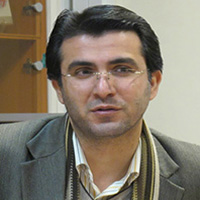Post-Saddam Shiism and the end of the holy geography regret syndrome in Shiism
Author(s):
Article Type:
Research/Original Article (دارای رتبه معتبر)
Abstract:
Religious systems spread across geographical contexts and thus form their own historical and geographical formations. The existing understanding and analysis of Shiite formulation is mainly concentrated on its time and historical developments. In this article, I have tried to deal with geographical aspect of Shiite identity formation by emphasizing the recent developments, especially the fall of Saddam and the liberation of pilgrimage of Karbala and other Shiite holy cities in Iraq for believers, in relation to the geography of the Holy Land in Shiite culture. Historical data show that Shiism has always regretted for the pilgrimage to its holy land, Karbala, and this has symbolically become a fundamental part of the identity and faith of Shiites around the world. The most important consequence of free access to the holy shrines has caused the fundamental change of this formulation of the centrality of the Holy Land and the end of this historical syndrome of regretting for the Holy Land and the desire for pilgrimage.
Keywords:
Karbala , Pilgrimage , Shiite , Holy Land , Sacred Geography
Language:
Persian
Published:
Journal of Iran Cultural Research, Volume:13 Issue: 2, 2021
Pages:
67 to 86
https://magiran.com/p2249307
مقالات دیگری از این نویسنده (گان)
-
Furtive lifeworld; A Case Study of Female Students from Yazd
Yeganeh Shoughoshoara *, , Sara Faridzadeh
Pazuhesname - ye Zanan, -
از رنج دنیوی تا رنج مقدس مسیله رنج در گفتمان کربلا با تاکید بر کتاب روضهالشهداء
*
نشریه مطالعات ادبیات شیعی، بهار 1402



